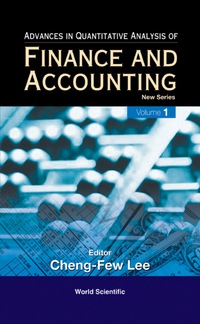
Heating, ventilation and air-conditioning (HVAC) systems are formed of various components. The heat supply component is comprised of heat production, heat distribution, and heat transfer subsystems. The latter system has three main elements; heat exchanger, pipes, and gate valves. In a university building, the maintenance management of the heat transfer system of HVAC, which consists of two heat exchangers, three sets of pipes, and five gate valves, is carried out with in- house resources and personnel. Historical data shows that a heat exchanger has an average mean time to failure of one year. These records also reveal that the "pipes" and "gate valves", in the heat transfer sub-system, are "expected to experience failure after functioning for two and three years, respectively. The failure in these elements is expected to grow exponentially over time. In addition, the following table shows the costing for conducting routine and reactive maintenance for the three elements of the heat transfer sub-system. Element Heat Exchangers Pipes Gate Valves Cost of Reactive Maintenance Cost of Preventive Program (S) Maintenance Program (S) $80,000 $120,000 $12,500 $2,500 $3,000 $1,000 Question 1) Estimate at what month each element is expected to become half reliable (10 Marks). Hint: Failure follows an exponential distribution. Question 2) What would be the best frequency of routine (preventive) maintenance (in months) for each element? (25 Marks) Hint: Calculate the probability of break-downs based on reliability distribution i.e. p;= 1 - R (i); where i=1, 2, 3, ... months. Question 3) A company with speciality in HVAC maintenance has offered a bundled maintenance outsourcing contract for the elements of the heat transfer system valued at $200,000 per month. Shall the university opt for this outsourced contract? (10 marks) Question 4) As part of the maintenance program, a Heat Resistant Metallic Paste is used for filling the cracks and holes in the heat transfer sub-system. If the demand for this paste is likely to grow by 20% due to the aging of this sub-system, how the economic order quantity for this paste should be adjusted accordingly? (5 Marks) Heating, ventilation and air-conditioning (HVAC) systems are formed of various components. The heat supply component is comprised of heat production, heat distribution, and heat transfer subsystems. The latter system has three main elements; heat exchanger, pipes, and gate valves. In a university building, the maintenance management of the heat transfer system of HVAC, which consists of two heat exchangers, three sets of pipes, and five gate valves, is carried out with in- house resources and personnel. Historical data shows that a heat exchanger has an average mean time to failure of one year. These records also reveal that the "pipes" and "gate valves", in the heat transfer sub-system, are "expected to experience failure after functioning for two and three years, respectively. The failure in these elements is expected to grow exponentially over time. In addition, the following table shows the costing for conducting routine and reactive maintenance for the three elements of the heat transfer sub-system. Element Heat Exchangers Pipes Gate Valves Cost of Reactive Maintenance Cost of Preventive Program (S) Maintenance Program (S) $80,000 $120,000 $12,500 $2,500 $3,000 $1,000 Question 1) Estimate at what month each element is expected to become half reliable (10 Marks). Hint: Failure follows an exponential distribution. Question 2) What would be the best frequency of routine (preventive) maintenance (in months) for each element? (25 Marks) Hint: Calculate the probability of break-downs based on reliability distribution i.e. p;= 1 - R (i); where i=1, 2, 3, ... months. Question 3) A company with speciality in HVAC maintenance has offered a bundled maintenance outsourcing contract for the elements of the heat transfer system valued at $200,000 per month. Shall the university opt for this outsourced contract? (10 marks) Question 4) As part of the maintenance program, a Heat Resistant Metallic Paste is used for filling the cracks and holes in the heat transfer sub-system. If the demand for this paste is likely to grow by 20% due to the aging of this sub-system, how the economic order quantity for this paste should be adjusted accordingly







